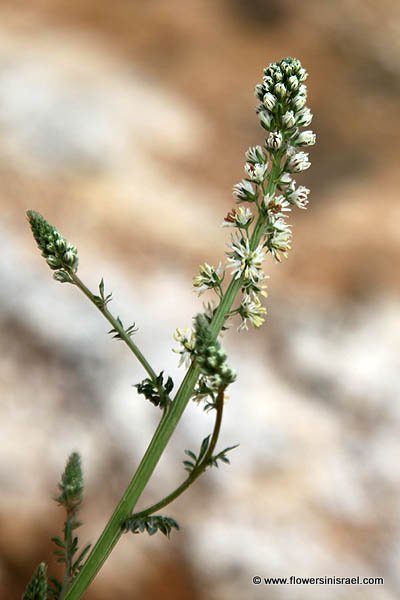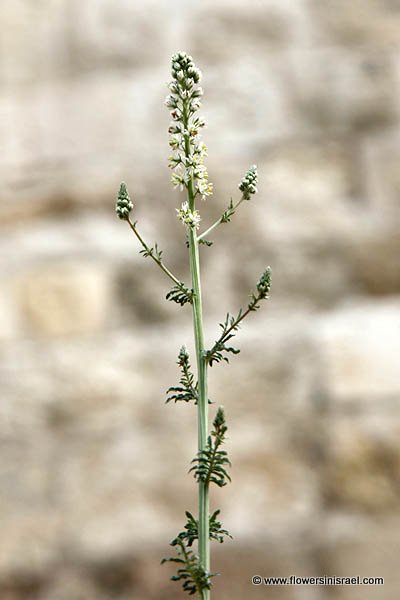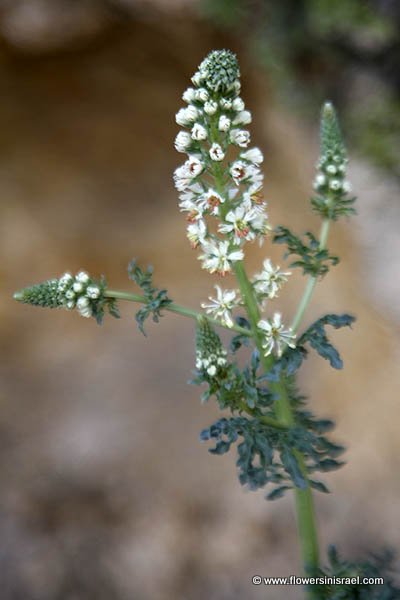Hebrew: רכפה קטנת-פרחים, Arabic: البليحاء البيضاء نويع المتطورة
| Scientific name: | Reseda decursiva Forssk. | |
| Synonym name: | Reseda eremophila Boiss. | |
| Common name: | Mignonette | |
| Hebrew name: | רכפת קטנת-פרחים | |
| Arabic name: | البليحاء البيضاء نويع المتطورة | |
| Family: | Resedaceae, רכפתיים |

|
| Life form: | annual | |
| Stems: | 10-50 cm high | |
| Leaves: | Rosette;leaves mostly at base; dissected, dissected once; dentate or serrate margin | |
| Flowers: | Hermaphrodite; flowers in terminal racemes. Sepals usually 4-7. white petals as many as the sepals, entire or shizopetalous, with a basally attached appendage. Stamens 10-40, inserted on a broad disc | |
| Fruits / pods: | Pods almost sessile, obovate to oblong; 4-8 mm long | |
| Flowering Period: | February, March, April, May | |
| Habitat: | Shrub-steppes, Desert | |
| Distribution: | Mediterranean Woodlands and Shrublands, Semi-steppe shrublands, Shrub-steppes, Deserts and extreme deserts | |
| Chorotype: | Saharo-Arabian | |
| Summer shedding: | Ephemeral |

Derivation of the botanical name: Reseda, Latin resedare, "to assuage or calm," because of supposed sedative properties. decursiva, passing. The Hebrew name: רכפה, richpa, Reseda is mentioned in the Mishnah as one of the plants that produce color: "And the species of dye, poa and richpa".


|